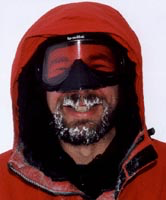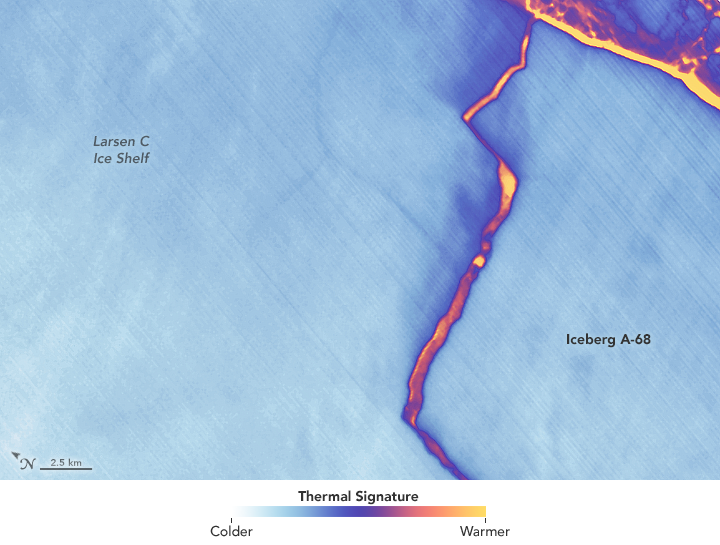
Shuman was one of many scientists on “iceberg watch” as the cracks in the Larsen C ice shelf expanded to eventually create iceberg A-68.
In the perpetual darkness of Antarctica’s winter, Shuman relied on the Thermal Infrared Sensor (TIRS) aboard Landsat 8 for night-vision.

Further Reading:
+ Landsat Spots Birth of Iceberg A-68, NASA’s Earth Observatory
+ Nighttime Pictures Reveal Antarctica’s Cracking Ice Shelves, National Geographic
+ Looking at Larsen C Fracture Mechanics with Landsat
+ Landsat ‘Sees in the Dark’ the Evolution of Antarctica’s Delaware-sized Iceberg
+ Massive Iceberg Breaks Off from Antarctica

Be Part of What’s Next: Emerging Applications of Landsat at AGU24
Anyone making innovative use of Landsat data to meet societal needs today and during coming decades is encouraged to submit and abstract for the upcoming “Emerging Science Applications of Landsat” session at AGU24.





